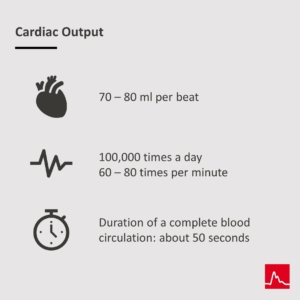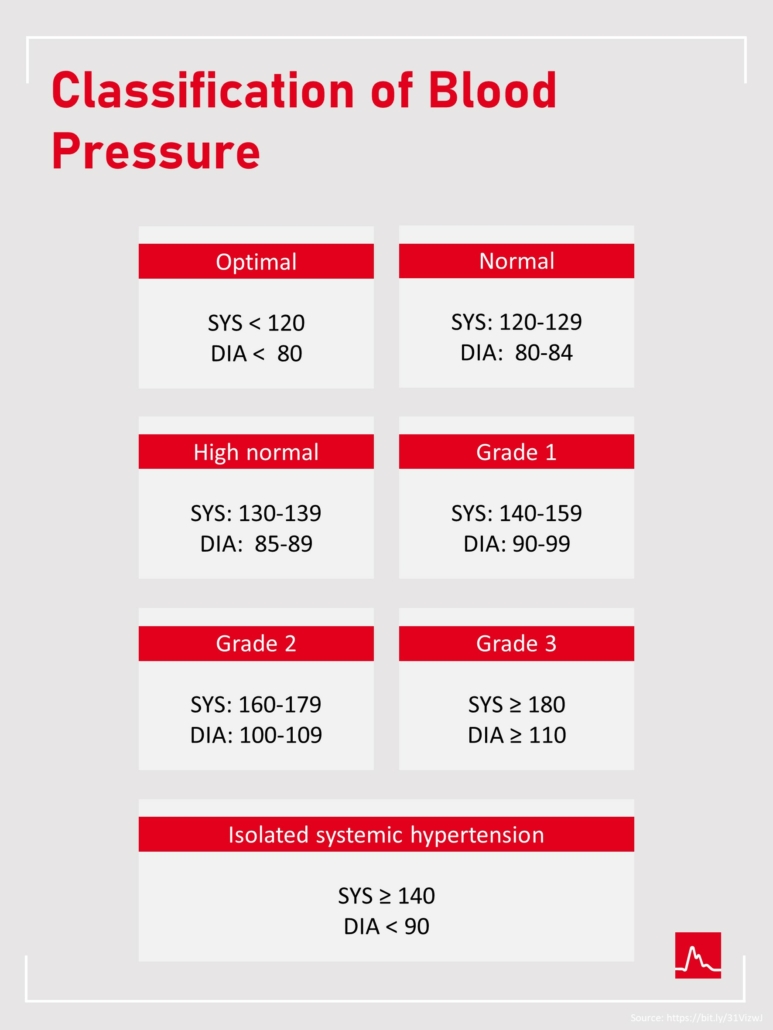Role of (arterial) blood pressure in the human circulatory system
Our heart beats about 60 to 80 times per minute at rest and pumps about 70 to 80 milliliters of blood into the human circulation with each beat. The heart of a healthy person beats about 100,000 times a day and supplies all organs such as the kidneys and brain with the oxygen they need through the flow of about 7,000 liters of blood. The relation between pressure and flow plays an important role in the way blood is transported through our circulatory system.

The human circulatory system can be divided anatomically into the systemic and pulmonary circulation and functionally into the high-pressure and low-pressure systems. The latter classification is based on the different pressure levels of the respective sections in the human circulatory system. Arterial blood pressure refers to the blood pressure in the high-pressure system. The high-pressure system moderates the blood pressure with the aim of constant organ perfusion (constant, demand-oriented blood flow). In the process, the body’s sensors control the regulation of arterial blood pressure. The pressure waves generated by the heart are called pulse waves. With the help of the so-called pressure pulse curves, the temporal change of the arterial blood pressure at a measuring point, as well as the forward movement of the pulse wave over different arterial sections, can be described.
Arterial blood pressure is characterized by the systolic and diastolic values, the blood pressure amplitude, and the arterial mean pressure. Learn more about those topics in the following explanations:
 Systolic blood pressure
Systolic blood pressure
is the highest point of the pressure pulse curve or the maximum arterial blood pressure at a specific measurement point in a cardiac cycle. It results from the ejection of blood from the left ventricle. The optimal systolic blood pressure is ≤120 mmHg.
Diastolic blood pressure
is the lowest point on the pressure pulse curve or the minimum arterial blood pressure at a given measurement point in a cardiac cycle. Diastolic blood pressure is generated by the Windkessel function of the aorta. The optimal diastolic blood pressure is ≤80 mmHg.
Blood pressure amplitude (also pulse pressure or pulse amplitude)
Refers to the pressure difference between the systolic and diastolic blood pressure values. This increases towards the periphery. The reason for this is the decreasing elasticity of the arteries from central to peripheral.
Mean arterial pressure (also mean arterial blood pressure)
is the average or mean pressure in the arteries. It decreases slightly towards the periphery. Due to the different lengths of a pulse pressure curve and the different pressure levels of systole and diastole, the calculation of the arithmetic mean is not sufficient.


